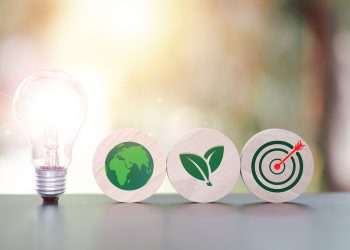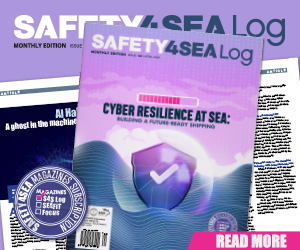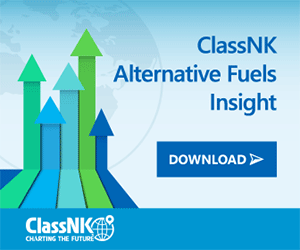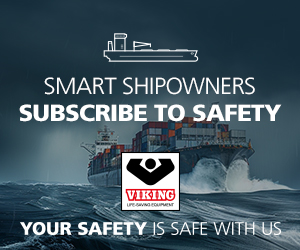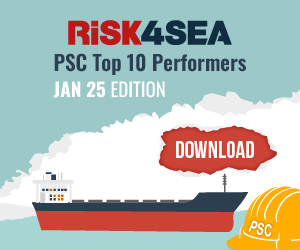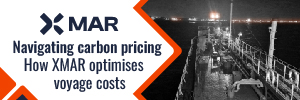In an exclusive interview to SAFETY4SEA, Kasper Møller Nielsen, Sustainability Partner at Mærsk Mc-Kinney Møller Center for Zero Carbon Shipping, emphasizes that the transition to a zero-carbon future remains a top priority and a driving force behind the industry’s future ESG agenda. Kasper explains that the Center’s approach focuses on a ‘Just and Equitable’ transition, identifying opportunities to redefine labor standards, improve working conditions, and embed human rights.
He further highlights that achieving sustainable shipping requires bold global leadership. By 2050, Kasper hopes we will have built a shipping industry that is not only zero-carbon but also addresses broader global challenges. The industry must transition in a fair and inclusive manner, improving how we distribute the Earth’s resources far better than we did in 2025. There’s no better time to start treating both the planet and people equally than now. This is the only way to create a resilient shipping industry.
SAFETY4SEA: What is your philosophy for the maritime industry and what are the top priorities on your agenda for the next five years?
Kasper Møller Nielsen: My philosophy reflects the Center where I am working at. Namely a place where industry stakeholders across the ecosystem unite to drive innovation, apply the science-based research, and regulatory reforms needed for a zero-carbon future. To transition to a zero-carbon future, a top priority must be to have the regulatory clarity to allow companies to invest in the technologies and solutions of tomorrow – derisking those investments becomes incredibly important. Further, we should also be aware of the broader social and environmental impact of the investments we make. To understand the interconnectivities between the much needed decarbonization solutions and how they interact with the people affected and the environment surrounding them will lay the foundation for a resilient transition.
S4S: Do you believe the maritime industry is on the right path? What key ESG and sustainability trends do you see shaping its future?
K.M.N.: The maritime industry is certainly on the right path. Despite the current global disruptions, I see movement in the right direction across the globe. That is both in terms of the technologies we develop, the technologies we apply and how these shape the business and regulatory landscape. I am convinced that decarbonization will continue to be the main driver behind both current and future ESG and sustainability trends. The main reason for that is corporate’s tendency to focus on numbers – and for good reason since numbers drives financial decisions. With that logic in mind, decarbonization will remain the leading force behind future ESG and sustainability trends. But behind every good decarbonization strategy lies an understanding of its impact on other planetary boundaries, like biodiversity and freshwater change. Namely because the solutions we implement today likely will last around 25 years – and the world will look very different in 25 years due to the climate change we are trying to mitigate the consequences from. Further, we must understand that the human and social dimension is incredibly important to address as well. The numbers might be harder to get, but this just underlines the needed focus. Therefore, addressing value chain challenges to consider safety for workers, human and labour rights, and include everyone involved to make this transition just and equitable for all.
S4S: What are the biggest opportunities and challenges related to the human element in shipping’s decarbonization journey?
K.M.N.: Every challenge represents an opportunity to do better. We are seeing that across the industry, from onboard safety to the new fuels and with upskilling of workers. There will be many challenges with this transition, but from what we have seen historically, we have overcome by far the majority. When I and we in the Center talk about the opportunities of the transition, we like to organize it based on our approach to a Just and Equitable transition. In here, we emphasize how this transition allows for a great opportunity to redefine labour standards, uplift working conditions, and embed human rights to a far greater extend that what we do today. Further, the production of the new fuels, makes room for new countries to become fuel producers making room for including everyone in this transition in a way where we allow for socioeconomic development, local skill-building and a more equitable distribution of the resources globally.
S4S: How can industry stakeholders collaborate more effectively to drive meaningful progress toward sustainable development?
K.M.N.: Collaboration is key to address the many challenges we face in this transition. The industry is interconnected to one another, making everyone relying of each other’s data to report their actual impact in a transparent way. Therefore we already see a lot of collaboration in the industry today. But leveraging that collaboration to include more than just reporting will be key to drive and sustain progress towards our common targets. Thankfully we have a lot of companies and competitors that meet in the Center to do exactly that – whether it is on vessel solutions, energy and fuels or in the regulatory landscape.
S4S: What is your wish list for the industry and/or regulators and all parties involved for addressing the critical issue of decarbonization?
K.M.N.: Ambitious targets and clarity on how to get there – even in turbulent times. Most companies have set targets to decarbonize their respective business. Some are retreating them as we speak, others are sustaining and reinforcing their efforts. But when these turbulent times have passed and media focus is elsewhere, the climate and sustainability risk we were trying to mitigate will still be present. Hence, industry and regulatory courage and persistence on setting and sustaining ambitious decarbonization targets must be highest on my wish list. Moreover, your target is not stronger than your plan of how to get there. Therefore, include interim targets and investments needed to get there. Only then can you comfortably claim that you have got a credible decarbonization strategy and clarity on how to get there.
S4S: Looking ahead to 2050, what key message about sustainable shipping would you include in a time capsule for industry stakeholders to reflect on?
K.M.N.: My time capsule should be a reminder that this historic opportunity requires global leadership. We have all the technologies, the fuels and the knowledge we need. Hence, it is my sincere hope, that when we read this in 2050, we acted accordingly and created a shipping industry that is more than just zero-carbon. The solutions we implement and adopt harvested the synergies across other planetary boundaries that only climate change. Further, we transitioned an entire industry justly, inclusively and in a way, where we distribute the Earth’s resources globally way better, than what we did in 2025. That was no better time to start treating planet and people equally than in 2025. Only in that way can we create a resilient shipping industry.
The views presented are only those of the authors and do not necessarily reflect those of SAFETY4SEA and are for information sharing and discussion purposes only.









































